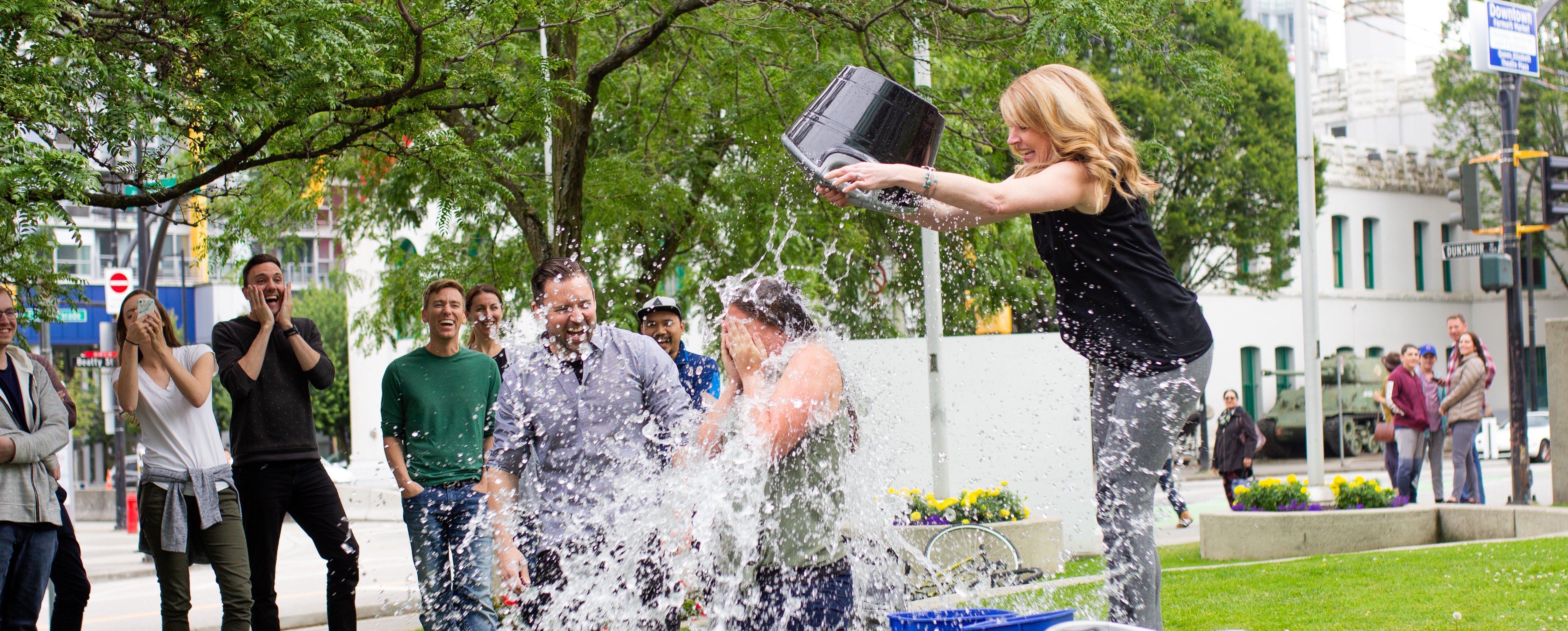The ALS ice bucket challenge has been undeniably successful – from raising awareness for a cruel and silent disease to the funds raised to support the organization’s mission, which the ALS Association reported has surpassed $88 million (http://www.alsa.org/news/media/press-releases/ice-bucket-challenge-082614.html). Less remarkable is the fact that most of the donations have come from 1.1 million new donors to the organization; after all, awareness hopefully attracts new supporters to organizations. As someone who studies philanthropy, it has been interesting to watch the coverage about this viral fundraising success.
The media coverage ranges from glorifying the participation of celebrities to criticizing the effort because it wastes water, which must seem reckless to those living in drought areas in our country and around the world where clean water is scarce. It has criticized the challenge as a stunt-based effort, suggested that other charities are trying to, or should try to, replicate the challenge and has produced stern warnings that the ALS Association must think about how to retain all these new donors and that this campaign will not challenge professional fundraising practices.
Initially, even I opined with a bit of caution. I did not want nonprofit organizations to produce a wave of stunt-based fundraising initiatives that could either give them false hope for a short-term gain, detract from their mission or, at worst, potentially harm participants. It is important not to overlook the fact that being first to market matters, especially in these types of viral movements. Recall that just a few years ago, nonprofit organizations created rubber bracelets for their causes, with the hope of repeating the success of the yellow LIVESTRONG bracelet. It is rare when an effort so disconnected from an organization’s mission can produce long-lasting results, so some of the cautioned discourse around the ice-bucket challenge is warranted.
On the other hand, there are lessons we can learn from observing this campaign. First, nonprofit organizations need to be ready to answer the question, “How will you use the money?” when they receive unexpected funding. While it is not common for organizations to see their annual revenue double in a few weeks, as has been the case with the ALS Association, major gift opportunities can arise quickly. Does the organization have strategy in place that can guide them when they experience unprecedented growth? I challenge organizations to ask if they would be prepared to manage an unexpected gift wisely.
Second, will we be able to resist criticizing the ALS Association in the next round of publicity? While I absolutely support accountability in the nonprofit sector, it seems that the discussion of philanthropic initiatives quickly sours, particularly in flash situations when a significant amount of money is raised. After weeks of celebrating the generosity of individuals during a crisis, the coverage turns to questions of whether or not the organization handled the gifts appropriately or used the money as the pundits, who may not understand nuances of nonprofit management, feel they should have. Unfortunately, this secondary round of discussion tends to remain focused on the short-term and criticize strategic or long-term use of the funds. In this case, I urge the ALS Association board and leadership to earmark at least 10 percent of the windfall to support expanded marketing and professional fundraising initiatives over the next five years so the organization can sustain the interest in curing ALS and continue raising more money for research.
Finally, the most fascinating lesson from the ice bucket challenge may be a renewed faith in the power of grassroots philanthropy. This challenge exemplifies philanthropy as “voluntary action for the public good,” as defined by Robert Payton, a pioneer in the field of philanthropic studies. What is more voluntary than choosing to dump a bucket of cold water on one’s self, posting it on social media and challenging other individuals to learn about the disease and make a gift to support an organization? The challenge has been embraced across generations, ethnicity, gender and economic lines that, too frequently, hinder progress. Instead, individuals from all walks of life are choosing to act, and the giggles from watching a person get doused with water come as easily from watching a six year old challenge her friends to learn about ALS to Bill Gates’ water dumping design. The sheer silliness is connecting us, and it is a reminder that collective action can be powerful.
I am confident that the ALS Association leadership will attempt to use these gifts as wisely as they can and that professional fundraising practices will not change because of the success of this viral challenge. Hopefully everyone participating in the challenge has been reminded that individuals can make a difference and that we will see some progress toward the cure of ALS. And, during times when our news feeds are flooded with negative stories about injustice, war, political division and attacks on the value of education, the ice bucket challenge is uniting us in our humanity.
About the Author
Angela Seaworth is the Director of Rice University’s Center for Philanthropy and Nonprofit Leadership, in Houston, Texas. Seaworth is an Advanced Certified Fund Raising Executive (ACFRE), a doctoral candidate at the Lilly Family School of Philanthropy and holds an M.B.A. from the University of Chicago’s Booth School of Business and a graduate certificate in nonprofit management from Indiana University’s School of Public and Environmental Affairs.

